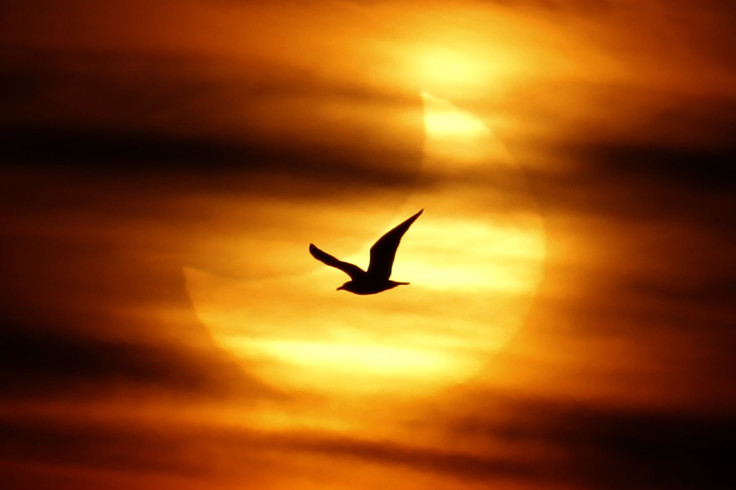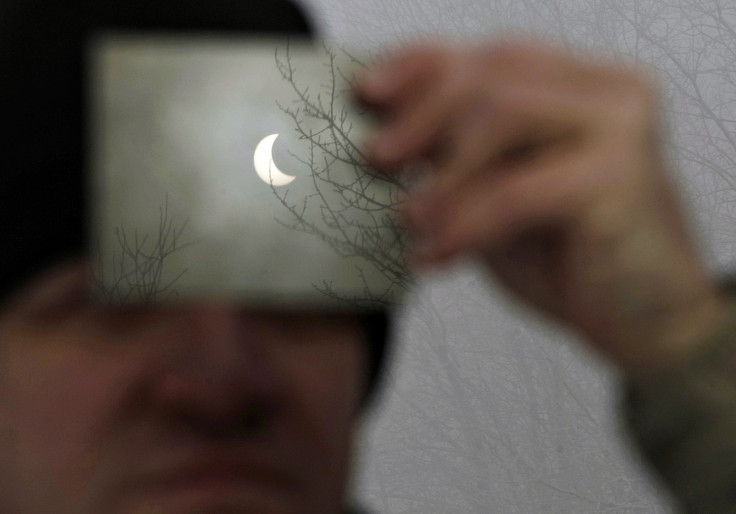Partial Solar Eclipse: Viewing Tips And Locations For Last Eclipse Of 2014

A partial solar eclipse will be the last eclipse of 2014 and visible across North America in the late afternoon Thursday, NASA reported. More specifically, the eclipse will begin around 5:51 p.m. EDT, with the greatest eclipse occurring at 6:08 p.m. EDT, EarthSky reported.
The partial solar eclipse will be visible throughout North America except for Hawaii and New England. "Observers in the Central time zone have the best view because the eclipse is in its maximum phase at sunset. They will see a fiery crescent sinking below the horizon, dimmed to human visibility by low-hanging clouds and mist," NASA's Fred Espenak said in a statement. A solar eclipse occurs when the moon passes in front of the sun, with total eclipse leaving just the corona visible while a partial eclipse will produce a crescent-shaped sun. In 2014, there were two total lunar eclipses, or blood moons, and two solar eclipses -- the first, an annular solar eclipse, was visible in Antarctica.

NASA advises observers to not directly look at the sun with the naked eye and suggested a few safe partial solar eclipse viewing tips.
A pinhole projector is the safest way to view the partial solar eclipse. Poke a hole into a piece of cardboard, or card stock, and hold it up to the sun. The partial solar eclipse will be projected onto a piece of paper or a screen. Exploratorium has several projection options for those looking to maximize their viewing experience.
NASA also suggests using your hands, interlacing your fingers and looking at the image that's projected on the ground. The same method works with tree leaves. Filters, or a telescope equipped with a solar filter, are another option but must be approved for solar observation; the space agency suggests a No. 14 welder's glass or aluminized mylar. NASA does not recommend using film, color or x-ray film, smoked glass or polarized filters.
NASA's visibility map can be viewed here. Local times in the U.S. can be found here, while times for Mexico and Canada can be found here.
© Copyright IBTimes 2024. All rights reserved.






















